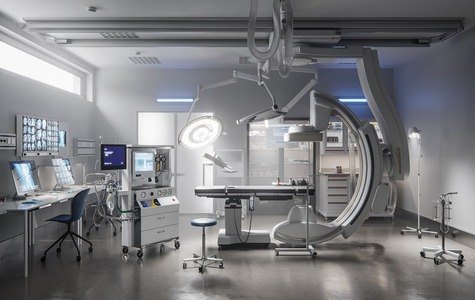- Medical Devices
- Thursday, 10 Oct 2019
Asia-Pacific Not Focusing Enough on Healthcare Waste
The significant factors that are driving the growth of the Healthcare waste market include increasing medical waste, initiatives undertaken for medical waste management and the increasing number of patient admissions across the globe. However, lack of awareness about health hazards associated with medical waste is one of the major restraint refraining for the growth of the market to a certain extent. The Asia Pacific region market is the fastest-growing market among all regions and is expected to grow with CAGR of 6.0%. The market for medical waste management in the Asia Pacific region is expected to reach US$ 3,845.2 Mn in 2027 from US$ 2,282.8 Mn in 2018. The market is expected to grow during the forecast period owing to the driving factors such as large patient population resulting in increasing number of hospitals admissions, increasing awareness among socioeconomic groups related to the benefits of proper waste management and stringent regulations enforced by governments of the countries in Asia Pacific with respect to appropriate disposal of medical waste byproducts and residues.
With modern medicine continuing to maintain and sustain the current quality of wellness and care standards, the medical industry continues to produce an enormous amount of byproducts that can pose an adverse threat to both people and environment. Healthcare waste has witnessed comparatively lower attention in developing economies that have led to increasing diseases occurring due to side-effects of these waste products. According to the World Health Organization, an estimated 16 billion injections are administered across the globe in 2018, however not all the sharps and needles and disposed of orderly after their use. According to a report published by biomedical Waste Solutions, 5.9 million tons of medical waste was produced by American hospitals in 2018. Furthermore, in emerging economies such as India that has high-tech medical facilities and is one of the most common destinations for medical tourism also has a humongous amount of hospital waste generated in the country. For instance, according to the General Health Services India, the country generates approximately 550.9 tons of medical waste on a regular basis and is expected to produce775.5 tons of waste by 2022. Thus, the faster-growing generation of medical waste products is likely to propel the growth of the global medical waste management market over the forecast years.
The staggering amount of medical waste generated on an everyday basis is necessary to be disposed of appropriately. The environmental effects of discarding these wastes can lead to causing serious effects due to the byproducts and toxicity achieved as a result of the conventional methods used to dispose of the waste. One of the efficient ways that are yet not explored to its best is recycling medical waste. The recycled waste does not go to the landfill for incineration or other disposal techniques leading to a reduction in the intensity of pollution. Mixed plastic waste that is non-regulated represents a significant portion of the solid waste materials generated by healthcare organizations. Decision-makers and service providers offering solutions to medical waste management undertaking effective steps towards choosing an appropriate method for disposal of these solids can help to contribute positively to the growing environment burden. Moreover, these steps will lead to increasing adoption of recycling technologies fostering research and development to build sustainable techniques for waste management. Thus, the market players coming up with an innovative idea that maximizes the percentage of solid waste recycling is likely to provide significant opportunities and remain competitive in the global medical waste management market.
In 2018, the treatment and disposal segment held the largest market share of 40.7% of the medical waste management market, by service type. The consumables segment is also expected to dominate its market share in 2027 as treatment and disposal are one of the most crucial steps conducted for discarding hospital generated waste. On the other hand, recycling segment is anticipated to witness the fastest growth rate of 6.6% during the forecast period, 2019 to 2027 owing to the majority of the companies working towards developing eco-friendly solutions that includes recycling of medical wastes.
Product launches, agreements, and acquisitions were observed as the most adopted strategy in the global medical waste management market industry. For instance, in April 2016, Sharps Compliance Corp. launched the TakeAway Recycle System designed for the safe collection, return transportation and recycling of single-use medical devices. Moreover, in July 2016, Sharps Compliance Corp. acquired Citiwaste, LLC to expand it is northeast route-based business operations.
The global medical waste management market is expected to reach US$ 16,495.8 Mn in 2027 from US$ 10,563.2 Mn in 2018. The market is estimated to grow with a CAGR of 5.2% from 2019-2027.
Related Industry Updates
Advanced Medical Stopcock Market is expected to reach US$ 1,230.60 million by 2028
Jan 19, 2023
Intra-amniotic Infection Treatment Market to Receive Overwhelming Hike in Revenues by 2027
Jan 06, 2021
Latest Study on Asia Pacific Immunochemistry Equipment Market during 2019- 2027 | PerkinElmer, Abcam Plc, Agilent Technologies
Aug 22, 2020
North America Adult Diapers Market Research Revealing the Growth Rate and Business Opportunities to 2027
Jan 09, 2021
Human Chorionic Gonadotropin (hCG) Market Forecast to 2027 - Covid-19 Impact and Global Analysis - by Technology (Natural Source Extraction, Recombinant Technology); Therapeutic Area (Female Infertility Treatment, Male Hypogonadism, Oligospermic Treatment, Others); End User (Fertility Clinics, Research Institutions, Others) and Geography
Apr 22, 2021
Medical Equipment Maintenance Market is Thriving Globally with Top Leading Key Players- Johnson & Johnson, Abbott, Terumo Corporation, B. Braun Melsungen Ag, Aramark Services, Inc., Althea
Apr 23, 2021
New-fangled Reports Shines Light on North America Endodontic Devices Market | Growth Strategies Adopted by Top Key Players ,Future Trends ,Application Worldwide and Assessment To 2026
Sep 28, 2020
